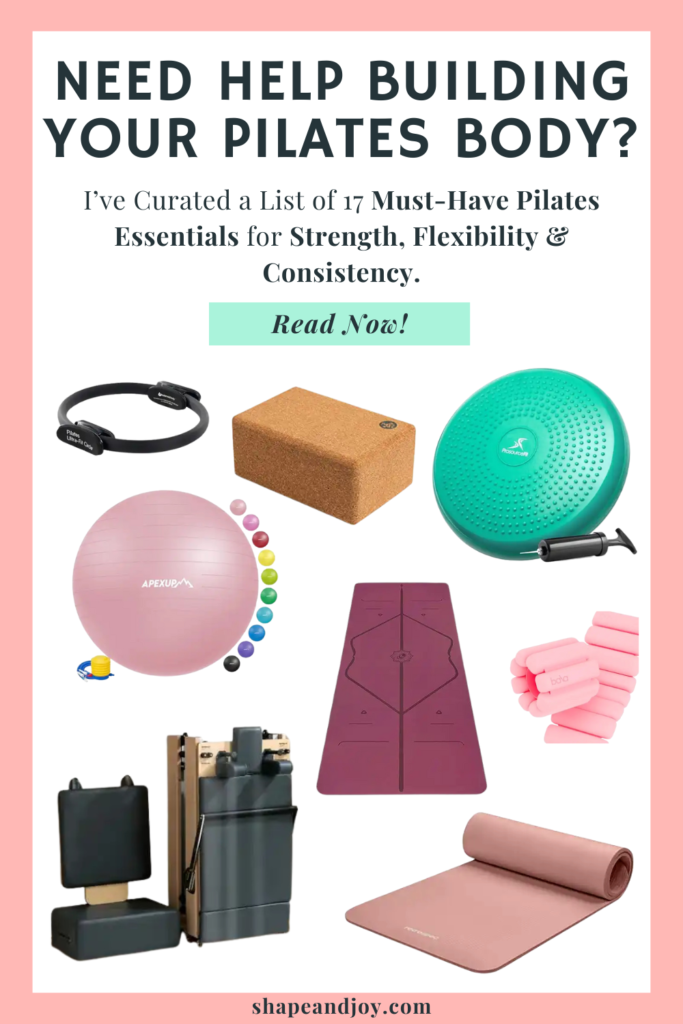This post may contain affiliate links, which means that I may earn a commission if you click on the link, with no cost for you. It’s one of the ways I support my blog. You can read more about this here.
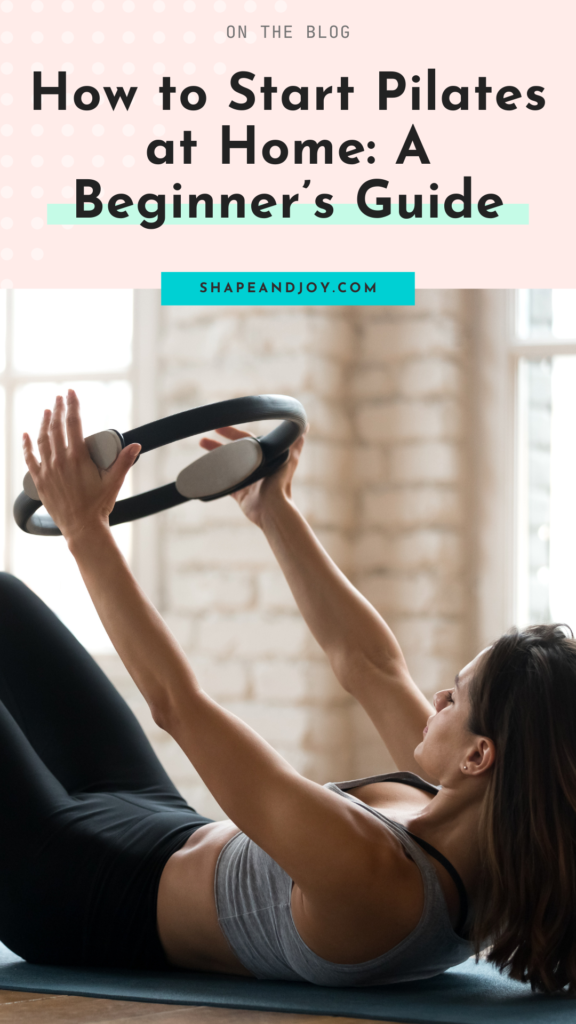
You’ve heard the buzz about Pilates—how it tones your body, improves your posture, and leaves you feeling as zen as a weekend yoga retreat. Maybe you’ve even caught a glimpse of those Wall Pilates before and after pictures and thought, “Could that be me?” Spoiler: yes, it absolutely could.
Last time, we had a chat about what Pilates is good for, the basics, and why this low-impact workout at home is worth a go. (Missed it? Go have a peek here—it’s the perfect primer for getting started!)
Now, whether you’re aiming for a Pilates body, starting on a 1-month glow-up challenge, or just looking for a way to move your body that feels good, you’re in the right place.
So, in this post, I’ll discuss:
- What you’ll need to start.
- Setting up your space.
- Beginner-friendly routines to try.
- Tips to stay consistent (because Netflix will tempt you, but Pilates is worth it).
Ready? Let’s roll up our sleeves (or should I say, roll out our mats?) and get you started on your first Pilates workout at home.
What You’ll Need to Start
First things first, you don’t need a fancy studio or top-tier gear. That’s the beauty of Pilates at home.
- Mat: A simple exercise mat will do. Bonus points if it’s a nice thick one, because some of us have back problems!
- Comfortable clothes: Think leggings and a snug top. Wondering what to wear to Pilates? Anything that lets you move freely and doesn’t ride up when you’re in those elegant Pilates poses.
- Optional props: If you’re feeling fancy, grab a resistance band, small weights, or even a Pilates bar. These can level up your Pilates workout routine, but they’re not essentials for beginners.
Setting Up Your Space
Your Pilates space needs to be as zen as you are about to feel.
- Distraction-free zone: Choose a corner where you won’t be interrupted by kids, cats, or the latest cliffhanger on your favourite show.
- Lighting and ventilation: Natural light and fresh air are your best friends here. Open a window or pop on a soft lamp for that mindful movement vibe.
- Atmosphere: Make it cosy! A candle, a playlist, or even a quote from Joseph Pilates himself pinned to the wall can set the tone.
Fancy trying wall Pilates exercises? Find a sturdy, clear wall and check out to level up your practice.
Fancy trying wall Pilates exercises? Find a sturdy, clear wall and check out ‘Ultimate 4-Week Wall Pilates Challenge For Beginner’s‘ to level up your practice.
Beginner-Friendly Pilates Routines
Let’s get you moving! Here’s a beginner-friendly Pilates workout routine to ease you into the practice.
These moves are simple, effective, and can be done in your cosy at-home setup. Pop on some soothing tunes and let’s go!
1. The Roll-Up
- What it does: Strengthens your core and improves flexibility in your spine.
- How to do it:
- Lie flat on your back, legs straight and arms extended overhead, palms facing the ceiling.
- Engage your core, exhaling as you slowly lift your arms, head, and torso off the mat.
- Reach forward towards your toes, keeping your movements slow and controlled.
- Inhale as you roll back down to your starting position, one vertebra at a time.
- Repeat 8–10 times.
Keep your movements steady and focus on using your abs rather than momentum.
2. Wall Bridge
- What it does: Activates your glutes, hamstrings, and core while improving pelvic stability.
- How to do it:
- Lie on your back with your knees bent and your feet pressed against the wall at a 90-degree angle.
- Press through your heels and lift your hips towards the ceiling, engaging your glutes and core.
- Pause at the top, squeezing your glutes for 2–3 seconds.
- Lower your hips back to the mat with control.
- Repeat 8–12 times.
Keep your upper back and shoulders relaxed on the mat for proper alignment.
📌 Pin this for later! ⬇
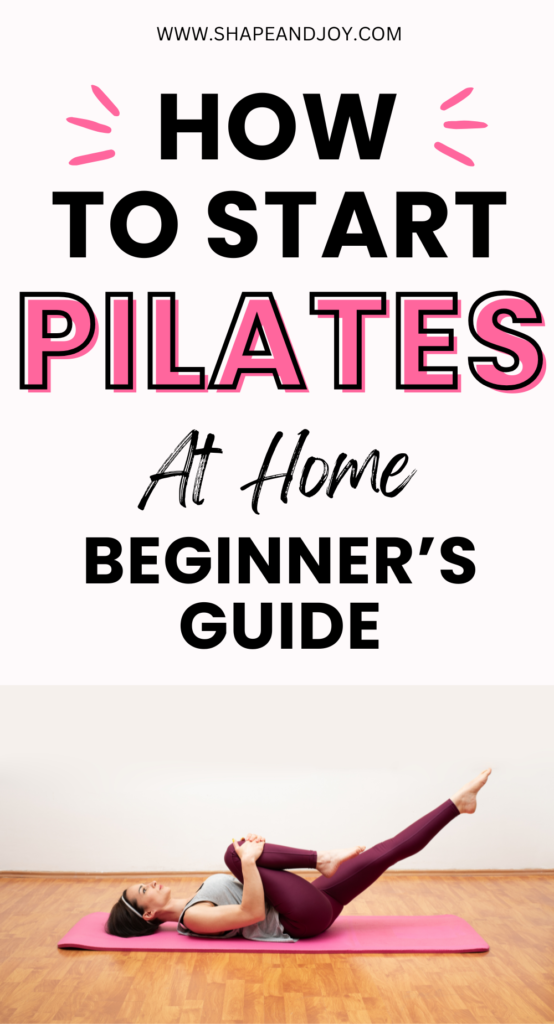
3. Cat-Cow Stretch
- What it does: Warms up your spine and promotes flexibility.
- How to do it:
- Start on all fours, with your wrists aligned under your shoulders and knees under your hips.
- Inhale as you arch your back, lifting your tailbone and head towards the ceiling (Cow Pose).
- Exhale as you round your back, tucking your chin to your chest and drawing your belly button towards your spine (Cat Pose).
- Alternate between Cat and Cow for 6–8 breaths.
Pro Tip: Move slowly and sync your breath with each motion for a calming, mindful flow.
4. The Hundred (Modified)
- What it does: Boosts circulation and strengthens your abs.
- How to do it:
- Lie on your back with your knees bent and feet flat on the mat.
- Lift your head, shoulders, and arms slightly off the ground, keeping your gaze towards your knees.
- Extend your arms alongside your body and pulse them up and down.
- Inhale for 5 pulses and exhale for 5 pulses, repeating 10 times (hence, “The Hundred”).
If you feel any neck strain, keep your head resting on the mat.
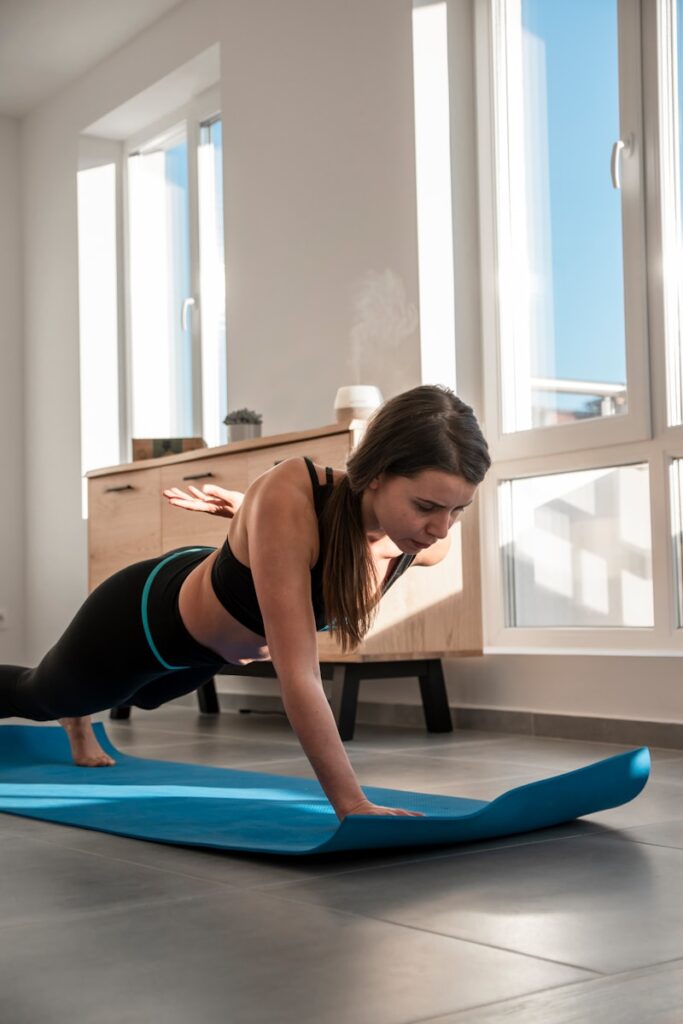
5. Side-Lying Leg Lifts
- What it does: Strengthens your hips and thighs while improving balance.
- How to do it:
- Lie on one side with your legs stacked and your head resting on your arm.
- Lift your top leg towards the ceiling, keeping it straight and controlled.
- Lower it back down with control, keeping your core engaged.
- Repeat 10–12 times on each side.
Don’t let your hips roll back or forward—imagine balancing a teacup on your hip for stability.
6. Spine Stretch Forward
- What it does: Improves posture and flexibility in your spine and hamstrings.
- How to do it:
- Sit tall with your legs extended straight in front of you, slightly wider than hip-width apart.
- Extend your arms forward at shoulder height, palms facing down.
- Inhale to sit up even taller, then exhale as you stretch forward, reaching for your toes.
- Pause, then roll back up to your starting position.
- Repeat 6–8 times.
Keep your movements smooth and focus on lengthening through your spine.
Quick Routine Plan
- Warm-Up: Cat-Cow Stretch (6–8 breaths)
- Core Activation: The Roll-Up (8–10 reps)
- Glutes & Thighs: Wall Bridge (8–12 reps)
- Circulation Boost: The Hundred (10 cycles)
- Lower Body Strength: Side-Lying Leg Lifts (10–12 reps per side)
- Flexibility: Spine Stretch Forward (6–8 reps)
This simple at-home Pilates workout is perfect for beginners and works as a foundation for progressing into more advanced moves.
Stick with it, and you’ll start seeing those results—hello, Pilates body!
Tips for Staying Consistent
Consistency is the secret sauce to glowing Pilates results. Here’s how to stick with it:
- Set a schedule: Pencil in your Pilates time like it’s a hot date with yourself.
- Online guidance: Use apps or YouTube for free workout plans.
- Track your progress: Keep a journal of your routines and reflect on how you feel after each session. Those Pilates workout benefits will keep you coming back.
More Pilates Tips & Workouts You’ll Love
Ready to take your Pilates journey to the next level? Check out these must-read posts for beginner-friendly workouts, expert tips, and game-changing Pilates advice to help you build strength, improve flexibility, and stay consistent!
- Ultimate 4-Week Wall Pilates Challenge For Beginner’s
- Pilates 101: The Ultimate Workout to Transform Your Life
- How to Start Pilates at Home: A Beginner’s Guide
- 5 Common Pilates Mistakes Beginners Make (and How to Avoid Them)
- 10 Easy Pilates Poses for Beginners to Master Today
- Pilates vs Yoga: Which One is Right for You?
- How Pilates Transforms Your Core Strength
- 16 Mental Health Benefits of Pilates (That’ll Have You Rolling Out Your Mat ASAP)
- Can Pilates Help You Lose Weight? Here’s What You Need to Know
- The Ultimate Pilates Kit: 17 Must-Have Products to Take Your Workouts to the Next Level
Conclusion
See? Starting Pilates at home is as easy as pie. With minimal equipment, a bit of space, and a sprinkle of determination, you’ll be smashing those beginner Pilates exercises and feeling the glow-up in no time.
And here’s the cherry on top: Starting is simple, but every beginner faces a few wobbles (literally and figuratively).
In the next post, we’ll chat about the common pitfalls newbies face and how to dodge them like a pro.
So, grab your mat, and let’s get cracking. Your future self (and your core) will thank you!
📌 Pin this for later! ⬇
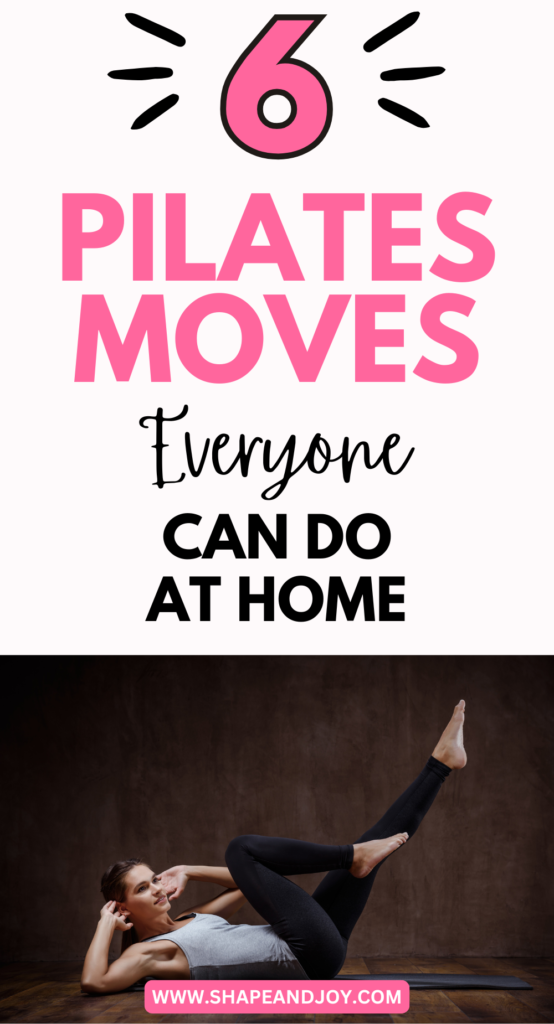
Studies
Pilates is effective for improving muscular and postural strength (Smartplay, 2007).
It improves skeletal muscle mass, flexibility, balance, core strength, body awareness, and reduces negative affect even with low-frequency practice (Tolnai et al., 2016).
Pilates enhances neuromotor fitness and balance in older adults, making it a suitable exercise modality for the elderly (Cancela et al., 2014).
A 12-week Pilates program significantly improves abdominal endurance, hamstring flexibility, and upper-body muscular endurance (Kloubec, 2010).
Pilates training improves dynamic balance and posture in healthy adults (Johnson et al., 2007).
Practising Pilates enhances flexibility, strength, balance, and body awareness, benefiting both mental and physical health (Nae, 2015).
A home-based Pilates program effectively improves core strength, muscular endurance, and posture (Donahoe-Fillmore et al., 2007).
Pilates is effective for enhancing arm-trunk posture, core control, and stabilising the spine during movements (Emery et al., 2010).
Pilates contributes to improved balance, trunk strength, and functional autonomy in the elderly population (Işık & Başar, 2021).
Mat and Reformer Pilates improve balance, core stability, and quality of life in patients with multiple sclerosis (Bulguroglu et al., 2017).


